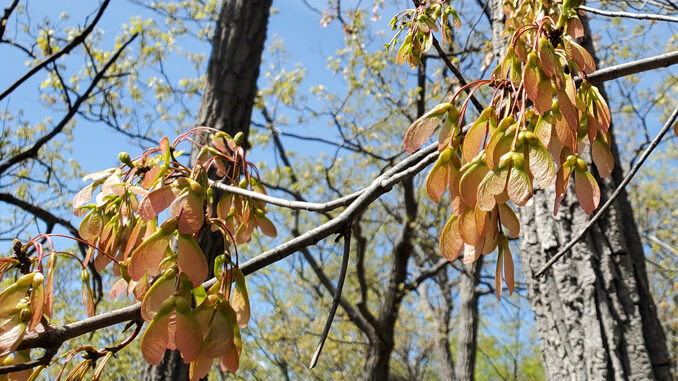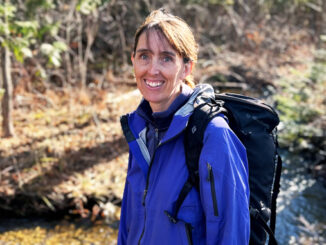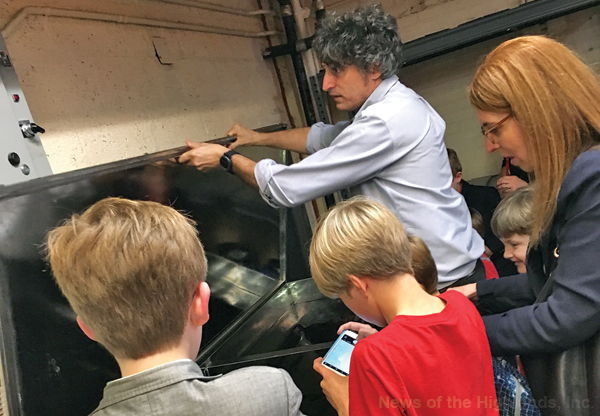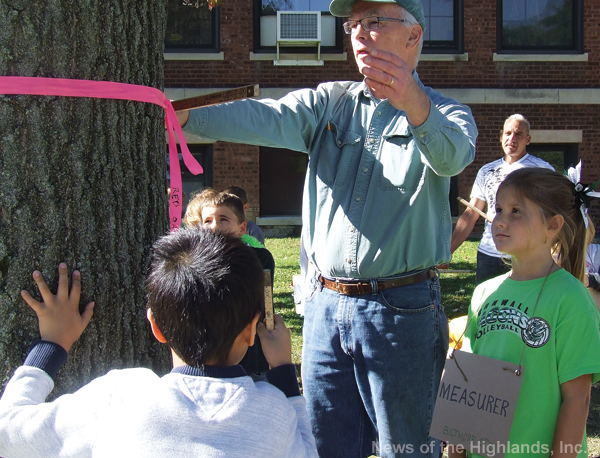
Data will help predict start of seasons
Black Rock Forest is seeking assistance from the community as it begins a Phenology Trail Monitoring Program. Phenology is the study of cyclic and seasonal natural phenomena, especially in relation to climate and plant and animal life.
“We started thinking about it about five years ago,” said Katie Terlizzi, Black Rock’s research manager. “One of the main reasons is to monitor the progress of climate change. Some of these things, like the timing of when leaves come out of trees or when they flower, are triggered by light and temperature. The longer you make these observations, the more you see an earlier and earlier onset of spring. If you look at the national phenology network, some sites have been monitoring these changes for decades and you can see we’ve been getting spring a few days to a week earlier than it was 20 or 30 years ago. We at the forest had been monitoring leaf out since the 80s, but we hadn’t connected with this national project. We decided we wanted to be part of this national network to contribute to this larger data set. The way to do that was to create a phenology trail.”
Cornwall fourth graders were called upon to set up the trail, which is about one mile in distance from the science center, up Honey Hill, to Alec Meadow. The students identified and flagged some of the plants and Black Rock staff made the final decision on which plants to monitor.
“We wanted a mixture of herbaceous plants, shrubs, and trees,” Terlizzi said. “We also wanted there to always be something to observe so we have plants that flower in the spring, summer, and fall represented.”
There are five species and three sets of each throughout the trail. They include White Wood Aster, American Witch Hazel, Red Maple, Pale Bush Blueberry, and Northern Red Oak.
“Now we need help because we’re a relatively small staff, and phenology is best done if you can get out there every single day and observe,” Terlizzi said. “We don’t have the time to be able to do that. It’s a great citizen science project to get the community involved in these observations and see climate change in action.”
Black Rock Forest is seeking between 30 and 50 volunteers and will be offering training from noon to 1 p.m. on March 2 (online webinar) and from 10 a.m. to noon on March 5 (in person).
Those interested must be able to attend both sessions. If attendance is not possible and one would still like to participate, e-mail info@blackrockforest.org.
Through the program, volunteers will be able to gain a stronger understanding of how phenology impacts the ecosystem, learn how to identify plant species and their phenophases, become part of a close-knit community of volunteer scientists, spend time in the forest on a regular basis, and make observations on their own schedule.
Terlizzi said the volunteers won’t be assigned a specific day or time, but should be able to make observations at least once a week, based on their schedule. If they choose to walk the moderate trail more than once a week, that’s welcome as well.
Volunteers will be asked to record observations through an app called Nature’s Notebook, or paper will be provided to those who aren’t comfortable using a digital device. They will be asked a series of “yes” and “no” questions such as, “do you see green leaves,” “do you see a flower,” and “do you see a fruit.”
Volunteers will be looking for different life events such as a flower blooming, the bud of a leaf breaking, leaves growing or changing color, and whether there is a fruit on the plant.
When it comes to citizen science, Terlizzi said it is possible for two people to observe something different, but it will be up to those who sort through the data to decide whether or not a data point needs to be thrown out based on the majority of responses.
“There could be one flower and maybe someone missed that one flower where other people saw it,” Terlizzi said. “The hope is if there’s a group of people they’ll write down the same thing, but people make mistakes. We expect that as well. That’s why we want 50 people, so we can have multiple observations for that quality assurance/quality control.”
Observations are expected to start at the end of March/beginning of April in order to obtain a few “nos” before getting a “yes” in terms of bud breaks. Data collection will continue through the beginning of November when most leaves will have fallen from trees and plants are dormant.
The data will help not only predict the onset of spring, but fall and winter as well.
Once the information is entered into the app, it goes to the National Phenology Network database. That data is publicly available by visiting usanpn.org. The website looks at trends from across the nation. Visitors can download the data and use it to create models and maps.



